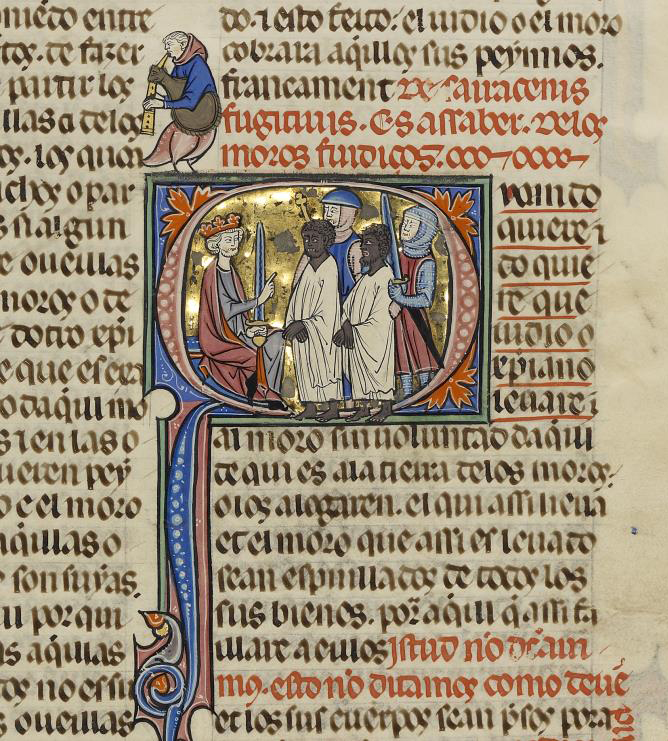202 Frick Fine Arts
 Professor Patton’s lecture challenges the flat reading often brought to medieval images of darkskinned figures, which may be assumed to represent slaves or servants and thus to reflect the ethnicity of subservient populations in medieval Europe, including Iberia. However, as this lecture will show, such assumptions speak more to the history of modern race relations than they do to the history of medieval Iberia, where enslavement was only rarely based on color, and many slaves were in fact light-skinned. Instead, both dark and light skin color in medieval Iberian art bore a surprising range of other connotations whose exploration permits a richer and more complex understanding of such works.
Professor Patton’s lecture challenges the flat reading often brought to medieval images of darkskinned figures, which may be assumed to represent slaves or servants and thus to reflect the ethnicity of subservient populations in medieval Europe, including Iberia. However, as this lecture will show, such assumptions speak more to the history of modern race relations than they do to the history of medieval Iberia, where enslavement was only rarely based on color, and many slaves were in fact light-skinned. Instead, both dark and light skin color in medieval Iberian art bore a surprising range of other connotations whose exploration permits a richer and more complex understanding of such works.Initial Q depicting slaves in custody, fol. 244r, Vidal Mayor (“Fuero de Aragon”), ca. 1300. Los Angeles, The J. Paul Getty Museum, MS Ludwig XIV 6
Patton’s scholarship centers on the visual culture of medieval Spain and its environs, particularly the role of the image in articulating cultural identity and social dynamics among the multiethnic communities of the Iberian Peninsula. Central to her work is the exploration of medieval iconographic traditions as uniquely expressive of community ideologies, practices, and folkways critical to modern understanding of the medieval world. She has published two monographs: Pictorial Narrative in the Romanesque Cloister (Peter Lang, 2004) and Art of Estrangement: Redefining Jews in Reconquest Spain (Penn State University Press, 2012), the latter the winner of the 2014 Eleanor Tufts Book Award. Her edited volume, Envisioning Others: Race, Color, and the Visual in Iberia and Latin America, was recently published by Brill. Her current research and forthcoming publications concern the depiction and meanings of skin color in Iberia and the western Mediterranean.
This lecture is co-sponsored through the generosity of the John Williams Memorial Fund, the Department of History of Art and Architecture, and the Religious Studies Department.
Reception to follow